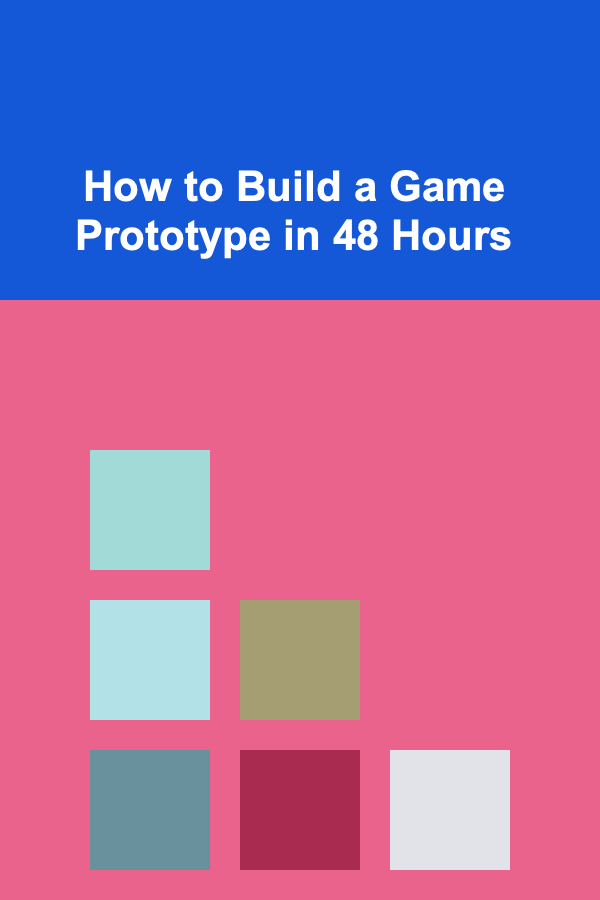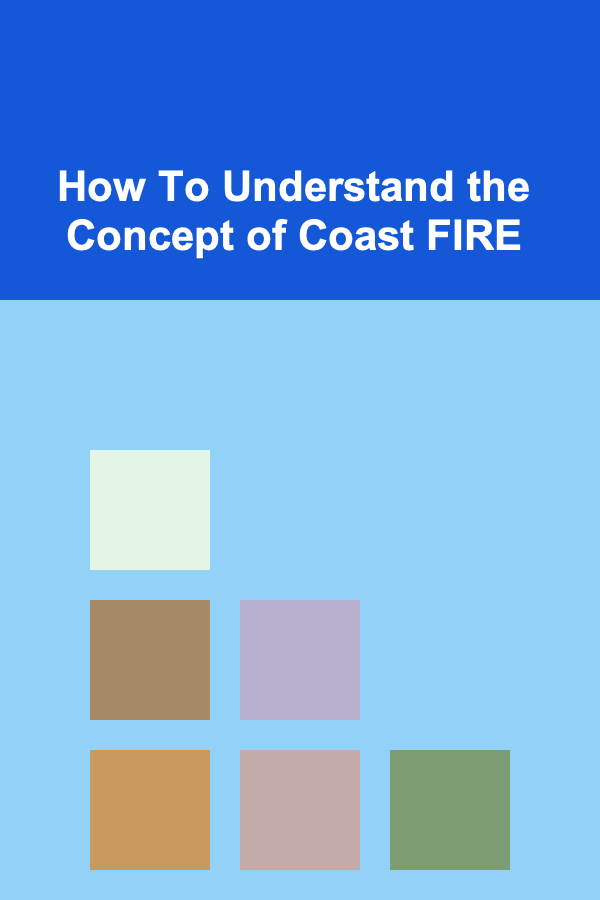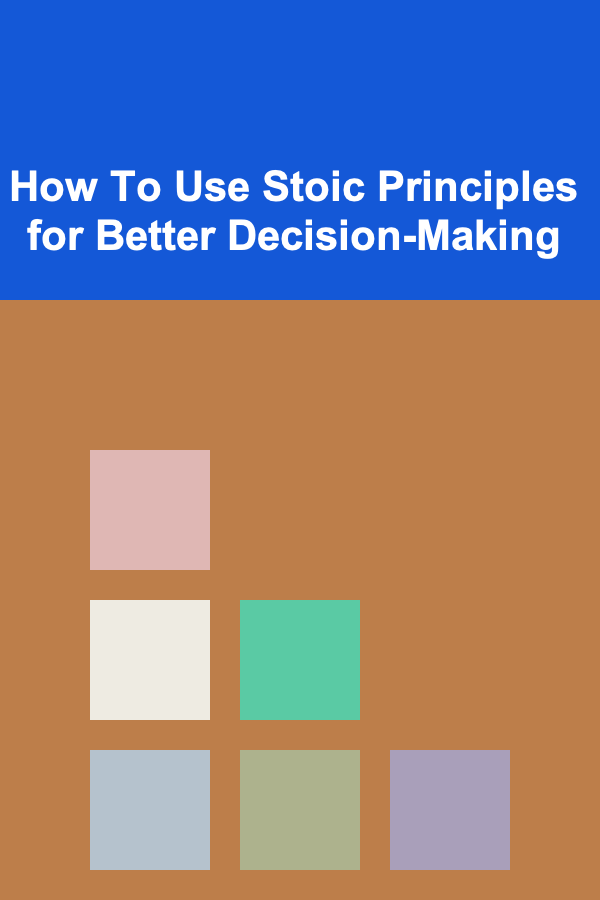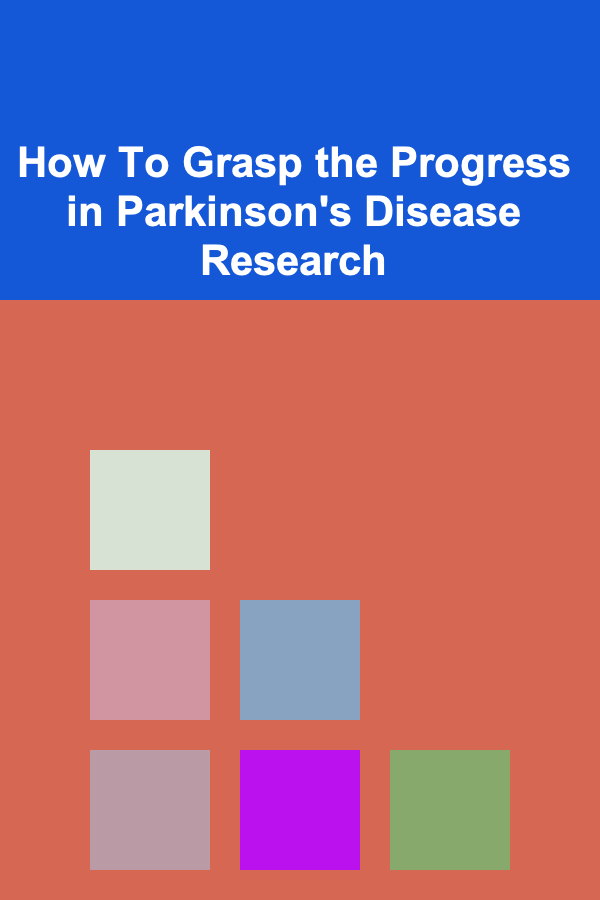
How to Build a Game Prototype in 48 Hours
ebook include PDF & Audio bundle (Micro Guide)
$12.99$7.99
Limited Time Offer! Order within the next:

Building a game prototype in 48 hours might sound like a daunting challenge, but it is entirely possible with the right approach, tools, and mindset. Whether you're participating in a game jam or just want to test an idea, prototyping a game within such a tight timeframe forces you to focus on the essentials and avoid getting lost in unnecessary details. In this guide, we'll break down the process of creating a game prototype in just 48 hours, highlighting key steps, practical tips, and the tools you'll need to succeed.
1. Understand the Game Jam or Prototype Constraints
Before you dive into creating your prototype, it's essential to understand the parameters and constraints of your project. Whether you're participating in a game jam, working on a personal project, or simply exploring an idea, there are a few core questions you should answer before moving forward:
- What is the objective?: Are you trying to impress a panel of judges, or simply experimenting with a new game idea? Know your goal.
- What are the rules?: Many game jams have rules about art styles, themes, or mechanics. Some may require that you use a specific engine, art assets, or sound libraries.
- What are the time constraints?: Although you have 48 hours, allocate specific blocks of time for planning, development, testing, and polishing.
Clarifying these points early on will help you set realistic expectations and avoid confusion later in the process.
2. Plan the Core Concept (and Scope)
The key to building a prototype in 48 hours is to keep things simple . The last thing you want is to overcomplicate your project and run out of time before you complete it. In this stage, you should identify the core gameplay loop---the most essential mechanic or interaction that will define your game.
Steps to Plan Your Core Concept:
- Brainstorm Quickly: Take about 30--60 minutes to jot down a few ideas. Focus on mechanics and experiences rather than elaborate narratives or complex designs.
- Prioritize Core Mechanics: Identify one or two core mechanics that will drive the game. For example, is it an endless runner where the core interaction is jumping, or a puzzle game where the player moves blocks around?
- Consider Replayability: Even though it's a prototype, aim to design a game that has enough engaging elements to make it worth playing more than once.
- Define the Win/Loss Conditions: Set clear goals for the player to achieve, as well as a simple way to fail (e.g., reaching a score, completing a level, avoiding obstacles).
Remember that the prototype doesn't need to be a polished, fully realized game. It's about creating something playable to communicate your idea.
3. Choose the Right Tools
To build your game in 48 hours, selecting the right tools is essential. While you might be familiar with more complex game engines, time constraints necessitate the use of fast, efficient tools that you can easily learn or work with.
Game Engines:
- Unity: A popular engine for 2D and 3D games, Unity provides a wealth of tutorials, assets, and built-in features, making it ideal for rapid prototyping. The Unity Asset Store also offers free assets for quick integration.
- Unreal Engine: Another excellent option, Unreal is known for its visual scripting tools (Blueprints), which allows non-programmers to build prototypes quickly. Unreal is ideal for 3D games but also supports 2D development.
- Godot: An open-source, lightweight engine that is particularly good for 2D games. It's perfect if you need something simple, and it has a low barrier to entry for beginners.
- Construct: A drag-and-drop game engine that allows you to build 2D games without any programming knowledge. Ideal for prototypes, Construct offers rapid iteration and testing.
Tools for Art:
- Aseprite: If you're making a 2D game, Aseprite is a great tool for pixel art. It's simple, fast, and allows you to create sprites quickly.
- Piskel: Another simple pixel art tool, Piskel is free and accessible, perfect for quick designs.
- Blender: For 3D games, Blender can help you create simple models and animations, though it has a steeper learning curve.
- Kenney Assets: Kenney is an excellent source for free and paid game assets. Using these assets can save you a significant amount of time in creating art from scratch.
Tools for Audio:
- Bfxr: A free tool that allows you to create sound effects quickly and easily. Great for prototyping sound effects without needing to hire a sound designer.
- Audacity: An open-source audio editor, Audacity can be used to manipulate sound files and create simple audio for your game.
4. Build a Prototype that is Functional, Not Fancy
The main goal of your 48-hour prototype is to create something that works. The game might not be feature-rich or beautifully designed, but it should convey the core gameplay mechanics clearly and be playable.
Key Steps for Building Your Prototype:
- Focus on Core Mechanics First: Start by implementing the primary game mechanics---jumping, running, shooting, or whatever action is central to your game. Don't worry about things like menus, scoreboards, or animations initially.
- Develop the Game Loop: The core gameplay loop should be your focus. Whether it's collecting items, avoiding obstacles, or solving puzzles, make sure this loop is fun and engaging from the start.
- Iterate Quickly: Time is of the essence, so avoid overthinking small details. Instead, iterate quickly by implementing basic features and testing them right away.
- Keep the Scope Narrow: Limit your game's features to a few simple elements. You can always expand on it later, but in this short timeframe, simplicity will be your best friend.
Prototyping Techniques:
- Placeholder Art: Use simple shapes or placeholder art for the prototype. Don't waste time on detailed visuals unless necessary. Focus on gameplay.
- Minimalist Design: Avoid creating elaborate levels or mechanics. Instead, focus on a single level or a simple system to demonstrate the gameplay.
- Break Down Tasks: Split the development process into manageable tasks. These might include movement, collision detection, scorekeeping, and creating obstacles or enemies.
5. Test and Iterate
Once your basic prototype is up and running, it's time to test and iterate. Playtesting is vital to understand if your game is enjoyable, intuitive, and functional.
Testing Tips:
- Test Early and Often: Don't wait until the end to test your game. Playtest frequently and make adjustments as you go.
- Get External Feedback: Even if you're working solo, try to get feedback from friends or fellow developers. A fresh perspective can help identify issues you might overlook.
- Focus on Core Interactions: Pay attention to how fun and intuitive the core interactions feel. Are players able to understand the gameplay easily? Are the controls responsive?
Iteration:
- Adjust Based on Feedback: If you receive feedback that a mechanic isn't fun or intuitive, don't hesitate to tweak or change it. Prototyping is about experimentation.
- Fix Major Bugs: While the prototype doesn't need to be perfect, it should be bug-free in its key mechanics. Prioritize fixing critical issues.
- Polish with Simple Visuals: After the core mechanics are in place, you can add simple visuals, animations, or sound effects to enhance the experience, but don't spend too much time on this.
6. Polish and Prepare for Presentation
In the final few hours of your 48-hour game prototype, focus on polish and presentation. While you don't have time for extensive detail, a clean and functional prototype will leave a better impression.
Key Areas to Polish:
- User Interface: Add basic UI elements like a start screen, pause menu, and score display. Keep the interface simple but intuitive.
- Sound: Add basic sound effects or background music to enhance the experience. Even simple sounds can make a significant difference.
- Bug Fixing: Make sure any game-breaking bugs are fixed. A game that crashes or freezes will leave a bad impression, so prioritize stability.
7. Submit and Reflect
Once your prototype is finished, take a moment to reflect on what you've accomplished. Even if you didn't manage to implement every feature you wanted, completing a functional prototype in 48 hours is a huge achievement.
Final Steps:
- Submit Your Prototype: If you're participating in a game jam, make sure to follow the submission guidelines and upload your prototype before the deadline.
- Reflect on the Experience: After submitting, take some time to reflect on the process. What went well? What would you improve next time? Use this feedback to improve your skills for future projects.
Conclusion
Building a game prototype in 48 hours is a challenge, but it's also an opportunity to push your creativity, sharpen your development skills, and create something that showcases your ideas. By following the steps outlined in this guide---planning your concept, choosing the right tools, building quickly, testing, iterating, and polishing---you can create a functional, engaging prototype within a short time. Remember, the key to success lies in focusing on the essentials and remaining flexible enough to adapt to changes along the way.
Good luck, and most importantly, have fun during the process!
Reading More From Our Other Websites
- [Home Party Planning 101] How to Create the Ultimate DIY Cocktail Bar for Your Party
- [Home Cleaning 101] How to Create a Spring Cleaning Checklist
- [Organization Tip 101] How to Create an Action Plan for Time Management Improvement
- [Personal Care Tips 101] How to Choose the Best Antiperspirant for Your Skin Type
- [Personal Financial Planning 101] How to Use the Best Investment Apps for Easy and Smart Investing
- [Personal Financial Planning 101] How to Manage Your Cash Flow for a Stress-Free Life
- [Home Storage Solution 101] How to Use Baskets and Bins to Keep Your Home Tidy and Neat
- [Beachcombing Tip 101] Eco‑Friendly Finds: Turning Beachcombing Discoveries into Sustainable Crafts
- [Personal Care Tips 101] How to Use Mouthwash to Relieve Dry Mouth
- [Mindful Eating Tip 101] From Plate to Heart: Building Stronger Family Bonds Through Mindful Eating

How to Market Your Bicycle Delivery Service to Local Businesses
Read More
How To Understand the Concept of Coast FIRE
Read More
How To Use Stoic Principles for Better Decision-Making
Read More
How To Grasp the Progress in Parkinson's Disease Research
Read More
Minimizing Fine Lines and Wrinkles: A Comprehensive Guide
Read MoreHow to Use an Expense Tracker for Restaurant & Entertainment Expenses
Read MoreOther Products

How to Market Your Bicycle Delivery Service to Local Businesses
Read More
How To Understand the Concept of Coast FIRE
Read More
How To Use Stoic Principles for Better Decision-Making
Read More
How To Grasp the Progress in Parkinson's Disease Research
Read More